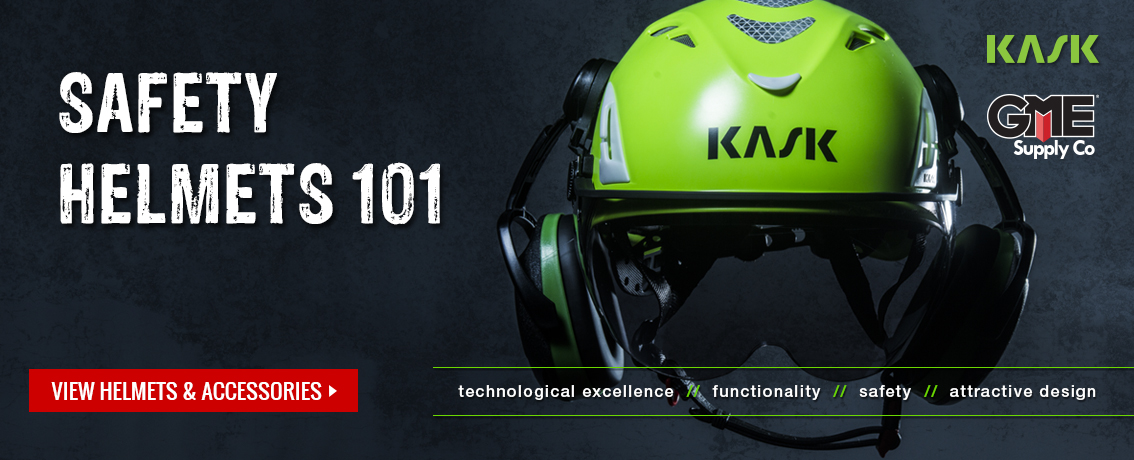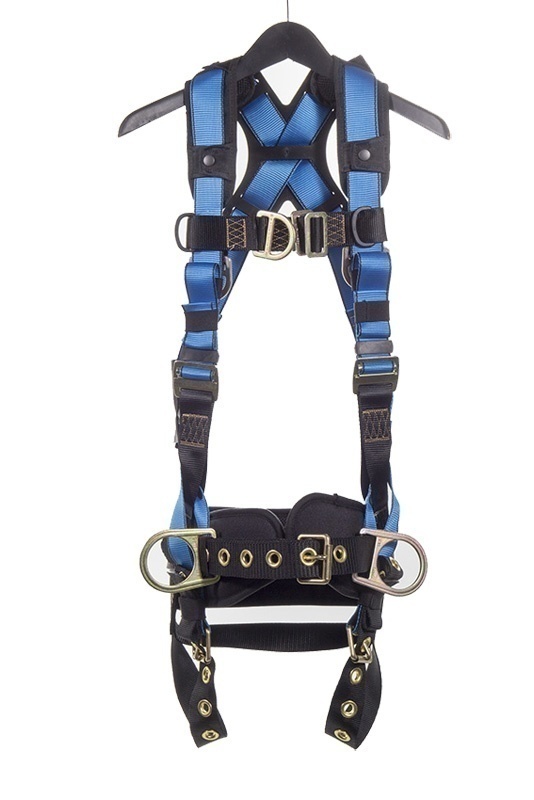Safety Helmets 101
 This week our Gear Experts® are here to talk about hard hats. Whether you call them helmets or hard hats, protecting your skull is an important part of on the job safety.
This week our Gear Experts® are here to talk about hard hats. Whether you call them helmets or hard hats, protecting your skull is an important part of on the job safety.
The Rules
OSHA states that a safety helmet must be worn “when working in areas where there is potential for injury to the head from falling objects.†Hard hats must also be worn in areas where there’s a risk of exposure to electrical conductors that can potentially contact the head. In these situations, specially designed helmets must be used.
Hard Hat Types
Type I
Type I hard hats are intended to reduce forces of impact from a blow to the top of the head. These are the most common helmet on the job site. Type 1 helmets would protect a worker from a dropped hammer or tape measure.Type II
Type II hard hats are intended to reduce forces from lateral impact coming from an off-center, side, or top of the head strike. This impact could be from a sharp corner of an I-Beam or swinging structural element of a tower. The sides of these helmets are typically lined with a high-density foam or suspension.Electrical Classes
Class E
Class E hard hats are designed to reduce exposure to high voltage conductors and offer protection up to 20,000 volts. These helmets cannot be vented. Formerly associated with the “Class B†rating, Class E hard hats can also be considered a General, “Class G†hard hat.Class G
Class G hard hats are designed to reduce exposure to low voltage conductors. They offer protection up to 2,200 volts. Like Class E helmets, this protection is only for the head. Class G was formerly categorized as “Class Aâ€.Class C
Class C hard hats are considered conductive, and they do not provide any electrical protection. These helmets are typically vented, and only protect workers from impacts but do provide workers increased breathability.Labeling
To qualify as an ANSI certified helmet, there must be a legible label inside the helmet which identifies the standards that the hard hat was designed to meet. If your helmet is missing this label or it’s no longer legible, it should be replaced.
Service Life
A hard hats service life starts from the time it was put into service. While there is a date code stamped into the helmet, that is only the date of manufacturing. When a helmet is put into service, it should be documented on the label in the shell of the hard hat. The helmet suspension should be replaced after no more than every 12 months, and the helmet should be replaced after no more than 5 years. These dates are the maximum, and the helmet should be inspected regularly to ensure that it is still safe. If the hard hat has sustained an impact it must be removed from service. Even if there is no visible damage, the materials could have weakened and may no longer provide the level of protection required.
Best Practices
Suspensions should always be designed by the manufacturer to work with the specific hard hat and should not be modified. Only use the specific suspension when replacing a worn-out suspension and install it to the manufacturer’s instructions. This includes installing it backward, so the brim of a helmet can be worn in the back. Although, some manufacturers do offer swing-style suspensions which allow the helmet to be reversed. Do not paint your helmet. Chemicals in the paint can alter and damage the structure of the hard hat and reduce the protection provided. If you’re painting on the jobsite, always clean your helmet according to the manufacturer’s recommendations to remove any chemicals or paint residue that may be present. Pressure sensitive, non-metallic stickers or self-adhesive tape are typically acceptable on most of today’s hard hats. However, you must refer to the manufacturer’s recommendation to verify if they’re allowed on your particular hard hat and for placement guidelines.
Standards
ANSI/ISEA Z89.1-2014
This standard provides performance and testing requirements for industrial helmets, commonly known as hard hats. It establishes the types and classes of protective helmets, depending on the type of hazard encountered.OSHA 29 CFR 1910.135
Head Protection Requirements and Classifications of Hard Hats and Safety Helmets for general industry workers.OSHA 29 CFR 1926.100
Head Protection Requirements and Classifications for head protection for construction, demolition, and renovation workers. Need help finding the perfect hard hat for your or your crew? Click here to contact one of our Gear Experts®. → Click here to see our full selection of hard hats → Click here to download a poster version of this blog post from our Knowledge Base **The content of this blog is not intended to replace proper, in-depth training. Manufacturer’s instructions must also be followed and reviewed before any fall protection equipment is used.Safety Helmets: Playlist
Get Social
Be sure to follow us on social media to keep up with everything GME Supply has going on.
Facebook | Instagram | YouTube | Twitter | LinkedIn

We’re Also on Snapchat
Simply snap or screenshot this image ↓ to follow GME Supply!













